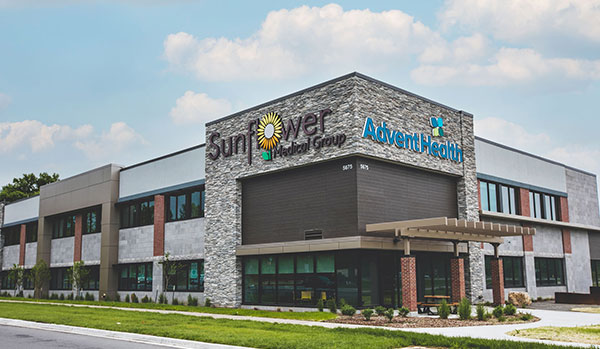Comparing Urgent Care Clinics: What Sets Our Clinic Apart
Comparing Urgent Care Clinics: What Sets Our Clinic Apart
Blog Article
Understanding the Role of Urgent Treatment in Giving Timely Therapy for Non-Life-Threatening Problems
Immediate care centers have actually emerged as an essential element of the healthcare landscape, attending to the immediate demands of patients with non-life-threatening problems. Understanding the subtleties of immediate care can considerably influence client end results and the general performance of medical care shipment.
What Is Urgent Treatment?
Immediate care describes a category of clinical solutions developed to resolve non-life-threatening conditions that need prompt attention. These facilities offer as an intermediary between main treatment physicians and emergency situation rooms, offering a hassle-free alternative for patients who need timely treatment without the extensive waiting times commonly connected with emergency divisions.
Immediate treatment centers are usually staffed by doctor, consisting of physicians, nurse specialists, and medical professional aides, that are trained to diagnose and treat a large selection of problems. Common services offered by these centers include therapy for small injuries, ailments, and infections, as well as diagnostic tests such as X-rays and research laboratory job.
In addition, urgent treatment centers typically approve walk-in clients, removing the need for consultations. Overall, urgent treatment plays a vital function in the medical care system, guaranteeing people can access important clinical solutions promptly and effectively.

When to seek treatment at an immediate treatment center instead of a key care physician or an emergency situation room,Several individuals might discover themselves uncertain regarding. Urgent treatment is designed to resolve non-life-threatening conditions that call for prompt focus but are not extreme enough to necessitate an emergency area check out.
Usually, one ought to consider urgent treatment for issues such as minor cracks, sprains, cuts calling for stitches, or infections like urinary system tract infections. Additionally, cold or flu signs, rashes, and sensitive reactions can also be suitably taken care of in this setup.
It is important to note that immediate treatment is not suitable for life-threatening emergencies, such as upper body pain, trouble breathing, or severe blood loss, which require prompt emergency situation area intervention.
People that lack accessibility to a medical care physician or can not protect a timely visit might additionally benefit from urgent care services. Eventually, recognizing when to make use of immediate treatment can lead to more efficient health care shipment, enabling individuals to get the ideal degree of treatment based upon their details health needs.
Advantages of Urgent Treatment Centers
Choosing urgent treatment facilities for non-life-threatening problems supplies numerous benefits that boost person experience and accessibility. One primary advantage is the lowered wait times compared to traditional emergency areas. Immediate treatment facilities commonly operate a first-come, first-served basis, enabling clients to get timely clinical interest without the long delays often connected with hospital setups.
In addition, urgent care facilities supply prolonged hours, including nights and weekend breaks, fitting clients with varying timetables. This versatility guarantees that people can seek care when it is most hassle-free for them, even more promoting prompt intervention.

Additionally, these facilities frequently offer a comprehensive variety of solutions, including diagnostic examinations and small procedures, all under one roof covering. This debt consolidation of services not just simplifies the individual experience but additionally fosters a much more cohesive approach to taking care of non-life-threatening health and wellness concerns, ultimately benefiting total individual outcomes.
Common Problems Treated
At immediate treatment centers, a selection of non-life-threatening conditions can be successfully treated, supplying patients with easily accessible and timely medical help. These centers are particularly skilled at addressing problems that call for prompt interest yet do not pose an instant danger to life or arm or leg.
Common conditions dealt with at immediate treatment facilities consist of small injuries such as strains, stress, and cracks. Immediate treatment facilities are furnished to carry out required diagnostic tests, such as X-rays and research laboratory examinations, allowing them to offer extensive care.
Moreover, urgent care companies can administer vaccinations, aiding to avoid the spread of transmittable illness - Urgent Care. They likewise provide solutions for small procedures, such as suturing wounds or draining pipes abscesses. By providing these diverse solutions, urgent care facilities play an important role in linking the space between medical care and emergency situation solutions, guaranteeing patients get timely therapy for a variety of problems without the find more information need for lengthy wait times typically linked with emergency areas
Exactly How Urgent Treatment Supports Healthcare System
Urgent treatment centers play an essential duty in supporting the total healthcare system by relieving the concern on emergency situation departments and supplying timely access to clinical care for non-life-threatening anchor problems. By handling instances such as minor injuries, infections, and health problems, immediate care centers allow emergency divisions to concentrate on more essential patients needing prompt attention.
Additionally, immediate care facilities improve medical care ease of access, supplying prolonged hours and a more practical choice to traditional medical care setups. This access is particularly helpful for people who may not have a routine doctor or that call for prompt treatment outside of common workplace hours. Because of this, immediate treatment facilities effectively reduce enhance and wait times individual satisfaction.
Additionally, urgent care facilities add to cost savings for both clients and the health care system by supplying lower-cost solutions contrasted to emergency situation divisions. This monetary effectiveness is vital in an era of rising healthcare prices, permitting patients to receive necessary care without sustaining expensive expenses.
Conclusion
To conclude, immediate treatment facilities play a crucial function in the health care system by delivering prompt therapy for non-life-threatening problems. By connecting the gap between medical care and emergency clinic, these facilities ensure that patients receive prompt clinical interest without the lengthy wait times generally connected with emergency situation divisions. The availability and effectiveness of urgent treatment facilities contribute significantly to alleviating the total problem on health care resources, boosting client outcomes, and advertising a more reliable health care delivery system.
Immediate care facilities have arised as an important part of the health care landscape, addressing the instant requirements you can try here of people with non-life-threatening conditions. Immediate care visits usually incur reduced out-of-pocket costs compared to emergency situation division check outs, making treatment much more budget friendly for people without endangering quality. Immediate treatment centers are outfitted to perform needed analysis tests, such as X-rays and lab examinations, enabling them to supply thorough care.
By using these varied services, urgent treatment facilities play an important function in linking the gap in between key care and emergency solutions, making certain patients get prompt therapy for a wide variety of problems without the demand for long wait times normally linked with emergency situation rooms.
Furthermore, immediate treatment facilities boost healthcare ease of access, using extensive hours and a much more practical alternative to conventional primary care settings.
Report this page